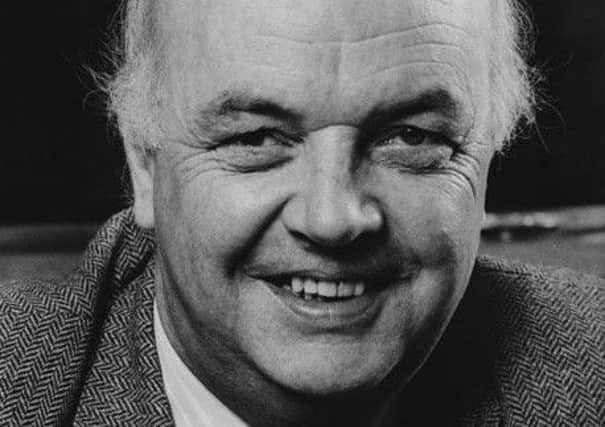Obituary: Martin MacDonald, journalist and broadcaster


Martin MacDonald, who has died at the age of 78, was an outstanding journalist and broadcaster who made a leading contribution to the development of Gaelic media over the past 50 years.
A native of the Skye crofting township of Achacorc, Martin’s ambition was to follow his father into the Merchant Navy. However, his maritime career was restricted to summer stints as galley-boy on the MacBrayne steamer, ‘Loch Seaforth’.
Advertisement
Hide AdAdvertisement
Hide AdAfter Edinburgh University, he worked as a freelance on Skye. He was an enthusiastic supporter of the Liberal MP, Russell Johnston, who won Inverness-shire from the Tories in 1964. Martin joined the BBC the following year, living thereafter in Aberdeen and Inverness, close to studios from which his mellifluous tones became bilingually familiar.
In the early 1970s, he edited and anchored a fine Radio Scotland news programme which would be unlikely to happen today: ‘Northbeat’ was broadcast from Aberdeen to the whole of Scotland with a strong weighting towards a north-east and Highland agenda.
From its early days, the West Highland Free Press benefited from Martin’s Gaelic column, which did much to establish the paper’s credibility on Skye. Gaelic journalism had been largely confined to cultural and historical musings. Martin’s news-edge and wry humour were transformational and encouraged others to follow.
BBC Gaelic television output had been limited to song until the advent of a current affairs programme, Bonn Comhraidh. Fred MacAulay, then head of Gaelic broadcasting, entrusted this opportunity to Neil Fraser as director with Martin presenting. Bonn Comhraidh covered stories of national significance while applying fine journalism and production standards to issues which were marginal from a central belt perspective. The ground was laid for future advances in Gaelic TV.
Martin’s wider talents were deployed by the BBC through responsibility for a radio broadcasting experiment from Westminster in 1975. However Alistair Hetherington’s arrival as controller of BBC Scotland, with sympathy towards local broadcasting and Gaelic, proved well-suited to Martin’s interests. By the mid-1980s, Inverness was a major broadcasting hub in both languages.
Martin played a large part in establishing Radio nan Gaidheal and became manager of the whole Inverness operation. His editorial instincts were, as he was first to recognise, superior to his managerial skills and he gave free rein to an outstanding group of young reporters to seek out real stories rather than “follow-up” or rely on press releases.
He played a significant role in wider Gaelic policy issues. I recall in the early-80s, staying with him and Catriona, the night before a Labour conference on Highland issues. I was committed to drafting a Gaelic policy but, like Martin, did not believe in delivering words before deadlines demanded. As the night wore on, it became apparent that drafting would be delayed till morning.
Thus, what became Labour’s first statement of policy on Gaelic was written, somewhat unsteadily, on Martin’s typewriter and with his considerable input. This became the policy lever which encouraged Labour local authorities to introduce Gaelic educational provision, supported by George Younger’s vital Specific Grants Scheme.
Advertisement
Hide AdAdvertisement
Hide AdMartin was commissioned by the HIDB to write a report on Cor na Gaidhlig/The State of Gaelic, published in 1984. It was characteristically astute in making the long-overdue case for linking social and cultural objectives to economic development. Where there are no people, there is no language. On the other hand, the Gaelic identity could make an economic as well as cultural contribution to areas in which it survived.
That led to the creation of Comunn na Gaidhlig, with a remit to promote this cultural/economic agenda and also support for the infant Feisean/festivals movement which had potential to strengthen tourism and retain young people in the Gaidhealtachd. While many would now accept the economic benefits of investing in cultural diversity, it was ground-breaking stuff in 1984, certainly in the Gaelic context.
Martin’s heart remained close to Skye and writing the history of shinty on the island, marking the centenary of Skye Camanachd in 1992, was a labour of love. He was also immersed in the land struggles which secured the rights of crofters in the late 19th and early 20thcenturies, on which he continued to write and broadcast.
In an essay for ‘Jock Tamson’s Bairns’, edited by Trevor Royle (1977), Martin recalled his Skye childhood and his grandmother, from Kilmuir, telling him about a great grand-uncle spending weeks in Edinburgh’s Calton Prison, for his part in the crofters’ movement. The impression was indelible.
Martin wrote: “My grandmother never spoke of Culloden or Prince Charlie; I suspect that to her he was as remote and mythical a figure as Cuchullin. But she had seen the Marines stand against her people and she remembered that”. Martin did much to keep such knowledge alive.
He was predeceased by Catriona, from South Uist, in 1999 and is survived by Seonaid and Niall Iain, the latter following him into Gaelic broadcasting.